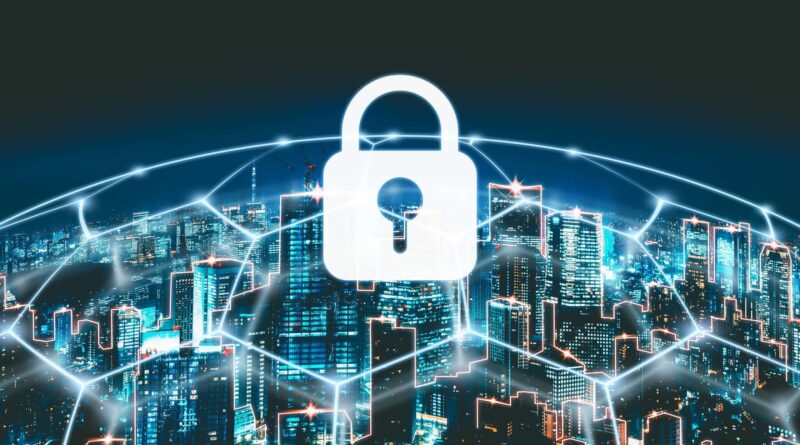What Are the Most Effective Methods for Preventing Cyberattacks?
In today’s interconnected world, businesses, organizations, and individuals face an ever-increasing number of cyber threats. Cyberattacks can range from data breaches and ransomware attacks to phishing scams and advanced persistent threats (APTs), all of which can cause severe financial and reputational damage. As cybercriminals continue to evolve their tactics, it’s crucial to understand and implement the most effective methods for preventing cyberattacks.
This article explores the best practices and strategies for preventing cyberattacks, from proactive security measures to employee education, helping businesses safeguard their data and operations against the growing threat of cybercrime.
1. Regularly Update Software and Systems
One of the most effective ways to prevent cyberattacks is to ensure that all software and systems are regularly updated with the latest security patches and updates. Cybercriminals often exploit known vulnerabilities in outdated software, which can provide an easy entry point into a network.
- Automated Updates: Enable automatic software and system updates to ensure that security patches are applied as soon as they become available. Many modern applications and operating systems support automatic updates, which helps reduce the risk of missed patches.
- Patch Management System: Establish a patch management process to track, prioritize, and deploy updates across your systems and devices. Regularly review patch management to ensure no critical updates are missed.
By keeping all systems and software up-to-date, you close security loopholes and significantly reduce the risk of a cyberattack.
2. Use Strong Passwords and Multi-Factor Authentication (MFA)
Passwords are the first line of defense in protecting sensitive information, and weak or reused passwords are a major vulnerability. A strong password strategy, combined with Multi-Factor Authentication (MFA), provides a more robust security layer.
- Strong Passwords: Encourage the use of strong, unique passwords that contain a mix of letters, numbers, and special characters. Passwords should be at least 12-16 characters long, and users should avoid using common phrases or personal information that can easily be guessed.
- Password Management: Use a password manager to securely store and generate complex passwords. This eliminates the temptation to reuse passwords across multiple platforms and reduces the risk of password fatigue.
- Multi-Factor Authentication (MFA): MFA adds an extra layer of security by requiring users to provide more than just a password. Common forms of MFA include a code sent to a mobile device, biometrics (fingerprints or facial recognition), or authentication apps. Implementing MFA helps protect accounts, even if passwords are compromised.
3. Educate Employees on Cybersecurity Best Practices
Human error is often the weakest link in cybersecurity defenses. Many cyberattacks, such as phishing and social engineering scams, rely on tricking individuals into providing sensitive information or downloading malicious files.
- Phishing Awareness: Train employees to recognize phishing emails, suspicious links, and other fraudulent attempts to steal sensitive data. Employees should understand the red flags of phishing emails, such as misspellings, unfamiliar senders, and urgent messages requesting personal information.
- Cybersecurity Training: Conduct regular training sessions that cover various cybersecurity topics, including the safe use of passwords, the importance of software updates, and how to identify potential threats. Employees should be encouraged to report any suspicious activity they encounter.
- Testing Employees: Conduct simulated phishing attacks and cybersecurity drills to test how employees respond to potential threats. This helps reinforce best practices and provides valuable insights into areas that may need improvement.
4. Implement Firewalls and Antivirus Software
A strong defense against cyberattacks requires the use of firewalls and antivirus software, which can help block malicious traffic, detect threats, and prevent malware from infecting your systems.
- Firewalls: Firewalls act as barriers between your internal network and external sources of potential threats. They monitor incoming and outgoing traffic to identify and block suspicious activity. Businesses should implement both hardware and software firewalls to provide layered protection.
- Antivirus and Anti-Malware Software: Antivirus software scans and detects malicious software, such as viruses, worms, and ransomware, that could compromise your systems. Keep antivirus software up to date, as cybercriminals are constantly developing new types of malware.
- Intrusion Detection and Prevention Systems (IDPS): These systems monitor network traffic and detect signs of unauthorized access or suspicious activity. An IDPS can alert your team to potential threats and help block attacks before they cause harm.
5. Regular Backups of Critical Data
Data backups are an essential part of any cybersecurity strategy, particularly in protecting against ransomware attacks. If a cyberattack does compromise your systems, having a reliable backup ensures that you can restore data and resume business operations quickly.
- Backup Frequency: Back up critical data regularly to ensure it remains up to date. Depending on the nature of your business, you may need to back up data daily, weekly, or monthly.
- Offsite and Cloud Storage: Store backups in multiple locations to reduce the risk of losing data in the event of a cyberattack. Cloud-based backup services offer secure storage options and the ability to quickly restore data in case of an emergency.
- Test Backups: Regularly test your backups to ensure they can be restored quickly and effectively. Testing ensures that your backup process works as intended and can minimize downtime in the event of a cyberattack.
6. Implement Network Segmentation
Network segmentation is a technique used to divide a network into smaller, isolated segments, making it more difficult for attackers to move laterally through the network after an initial compromise.
- Limit Access to Sensitive Data: By segmenting the network, you can limit access to sensitive data and applications to only those employees who need it. This minimizes the risk of unauthorized access and reduces the potential impact of a cyberattack.
- Containment and Controlling Access: Network segmentation can also help contain cyberattacks by preventing malware or unauthorized users from spreading across the entire network. If an attacker gains access to one segment, it’s harder for them to reach others.
- Zero Trust Architecture: The Zero Trust model assumes that all devices, users, and applications, even those inside the network, are untrusted until proven otherwise. This approach adds an additional layer of protection by requiring strict identity verification and continuous monitoring.
7. Monitor and Respond to Security Incidents in Real-Time
Real-time monitoring and a well-defined incident response plan are critical to identifying and responding to cyberattacks quickly. Cybercriminals can often gain access to systems and remain undetected for long periods, causing significant damage.
- Security Information and Event Management (SIEM): SIEM tools collect and analyze data from various sources to identify potential security threats in real-time. These tools can provide valuable insights into network activity and help detect anomalies or unauthorized access.
- Incident Response Plan: Develop and maintain a detailed incident response plan that outlines specific actions to take if a cyberattack occurs. This plan should include steps for containing the attack, identifying the source, communicating with stakeholders, and recovering from the breach.
- Continuous Monitoring: Implement continuous monitoring of networks, applications, and endpoints to identify potential threats before they escalate. Having a dedicated cybersecurity team or managed security services can help ensure threats are detected and mitigated as soon as possible.
8. Work with Third-Party Security Experts
Cybersecurity is a complex and ever-evolving field, and businesses may not always have the resources or expertise to handle it in-house. Partnering with third-party security experts can provide additional protection and insight into the best methods for preventing cyberattacks.
- Managed Security Service Providers (MSSPs): MSSPs offer comprehensive cybersecurity services, including 24/7 monitoring, threat detection, and incident response. They can help identify vulnerabilities, implement security controls, and provide ongoing support.
- Security Audits and Penetration Testing: Conduct regular security audits and penetration testing to identify weaknesses in your security systems. Penetration testing simulates real-world attacks to identify vulnerabilities that could be exploited by cybercriminals.
- Compliance with Industry Standards: Work with experts to ensure that your cybersecurity measures comply with industry-specific standards and regulations. Compliance with standards such as GDPR, HIPAA, and PCI-DSS can help protect sensitive data and prevent legal issues.
Conclusion
Cyberattacks are a constant threat to businesses, governments, and individuals worldwide. However, by implementing the right strategies and practices, organizations can significantly reduce their risk and minimize the impact of cyber threats. Regular updates, strong passwords, employee training, and robust security tools are essential in preventing cyberattacks. Additionally, proactive measures like data backups, network segmentation, and real-time monitoring are key to ensuring that your organization is prepared to defend against increasingly sophisticated cybercriminals.
Cybersecurity is a shared responsibility, and by taking a holistic, layered approach, businesses can better safeguard their data, operations, and reputation against the growing threat of cybercrime.

